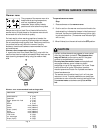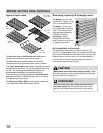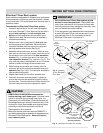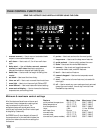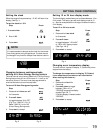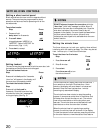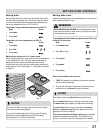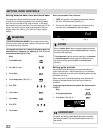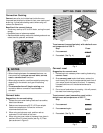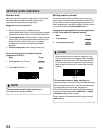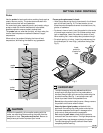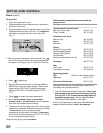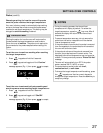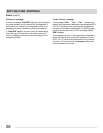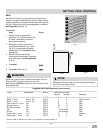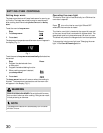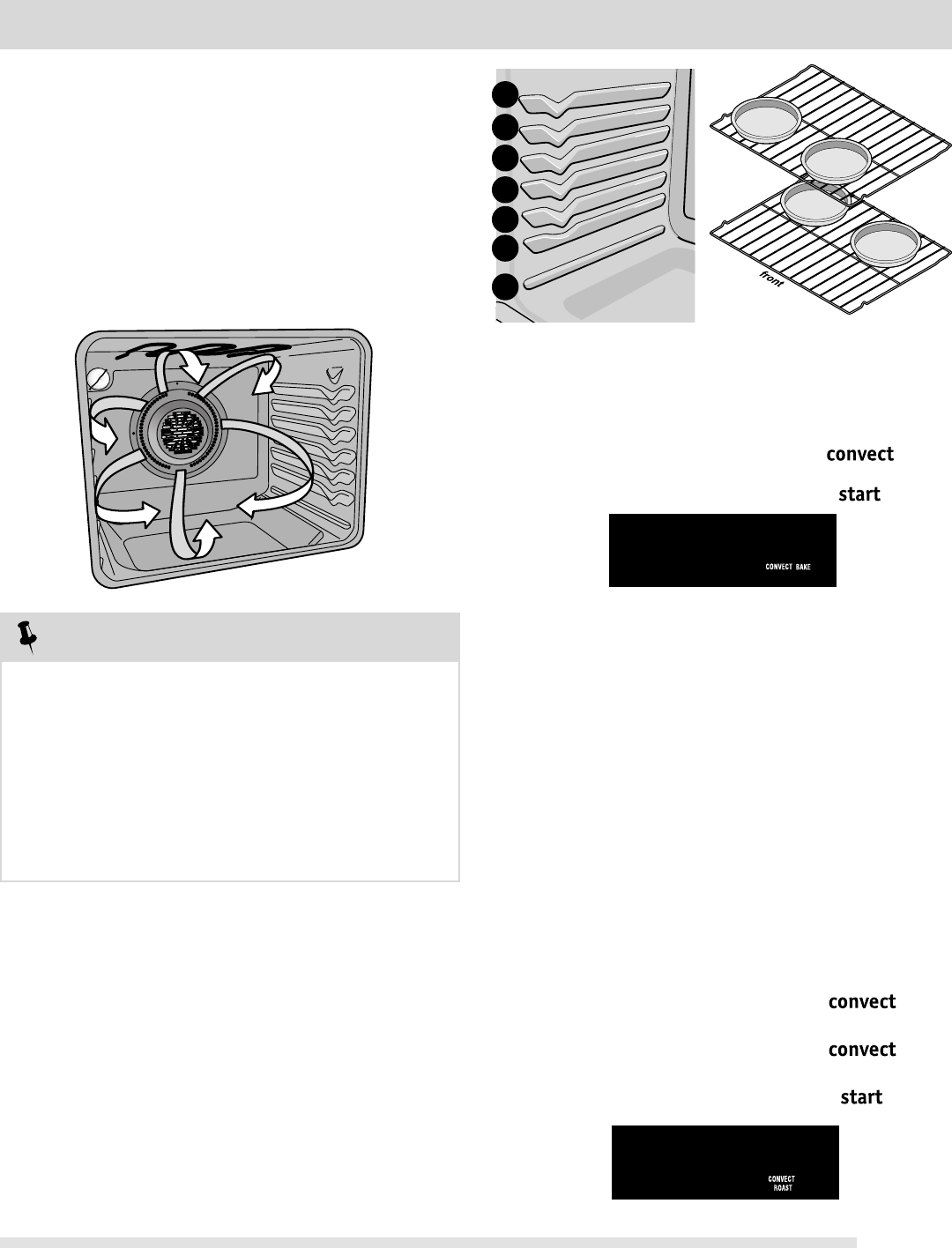
23
Convect roast
Suggestion for convect roast
1. Preheating is not necessary when roasting foods using
convect roast.
2. Since convect roast cooks food faster, reduce the
cook time by 25% from the recommended cook time of
your recipe (check the food at this time). If necessary,
increase cook time until the desired doneness is
obtained.
3. Do not cover foods when dry roasting - this will prevent
the meat from browning properly.
Convect bake
Suggestions for convect baking
1. Preheat the oven when baking foods such as cookies,
biscuits and breads.
2. Reduce oven temperature 25°F/14ºC from recipe’s
listed oven temperature. Follow the minimum
recommended cook time.
3. When using a single oven rack, position rack so
cookware is in the middle of the oven.
4. When using two oven racks at the same time, place in
positions 2 and 5 for best results (see Fig. 2). Place
pans as shown in Figure 3.
Convection Cooking
Benefits of the convect feature
— Foods may cook up to 25 to 30% faster, saving time and
energy.
— No special pans or bakeware needed.
— Recommended cooking method for baked goods such as
cakes, biscuits, pastries, and bread.
Convect uses a fan to circulate heat inside the oven.
Improved heat distribution allows for fast, even cooking and
browning. It gives better baking results when using two
racks at the same time.
NOTES
• When choosing between the convect features, use
the convect key to choose convect bake, convect
roast or convect broil functions.
• When using convection, cook time reductions may vary
depending on the amount and type of food being
cooked.
• The convection fan will begin rotating once
convection bake or convection roast has been
activated.
1. Press convect.
2. Press start (See Fig. 4).
To set convect (convection bake) with a default oven
set temperature of 350°F:
Step Press
Fig. 4
1. Press convect.
2. Press convect again.
3. Press start (See Fig. 5).
To set convect roast (convection roast) with a
default oven set temperature of 350°F:
Step Press
Fig. 5
SETTING OVEN CONTROLS
Fig. 1
Fig. 3
Fig. 2
7
6
5
4
3
2
1



